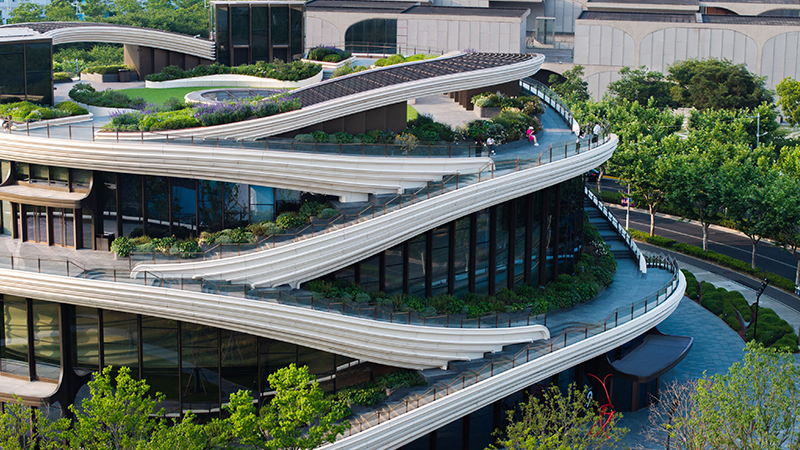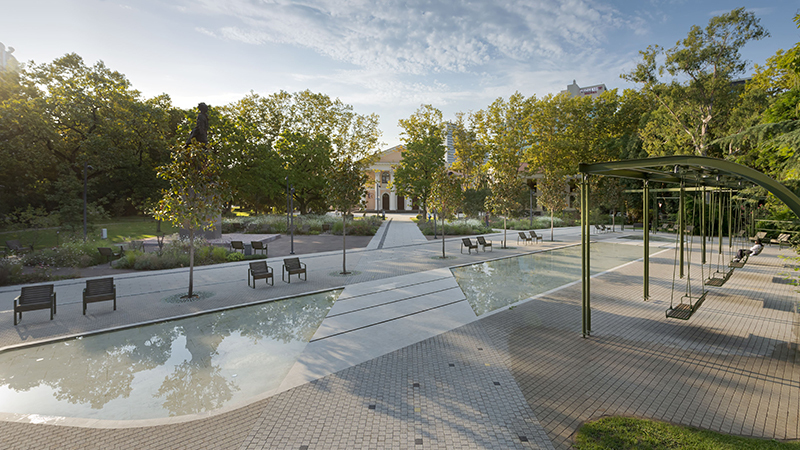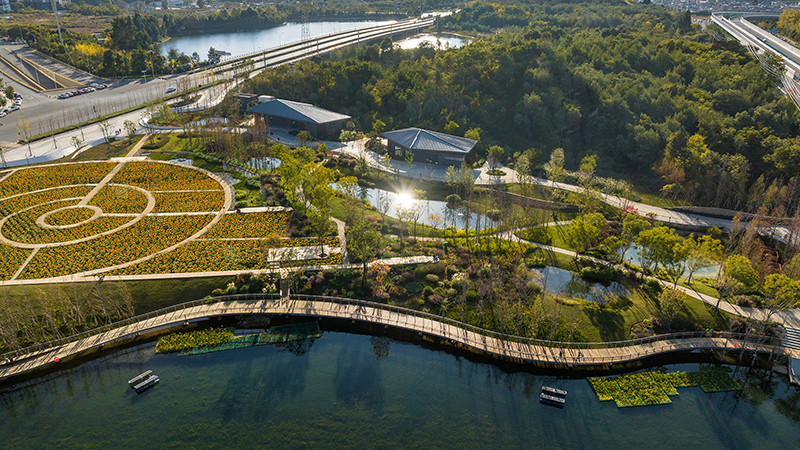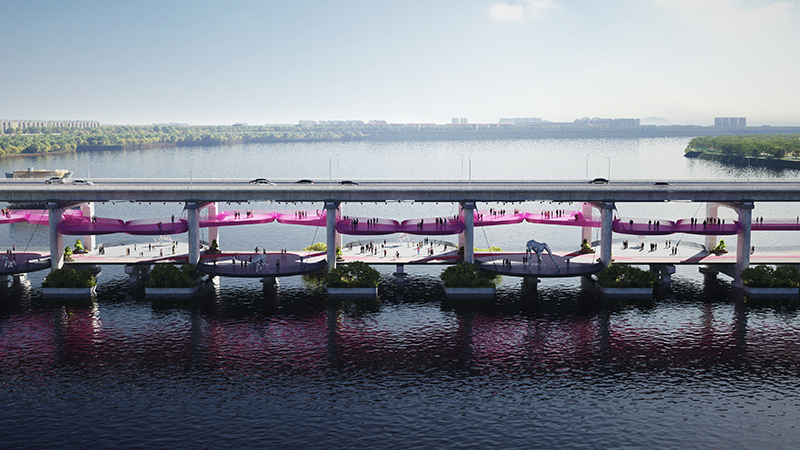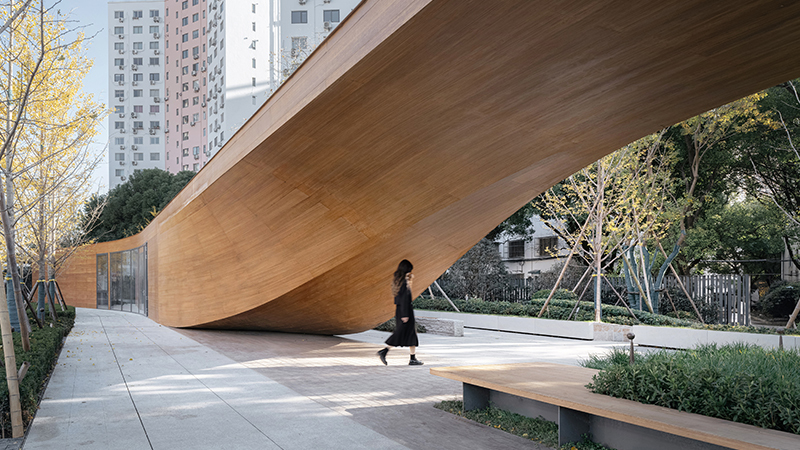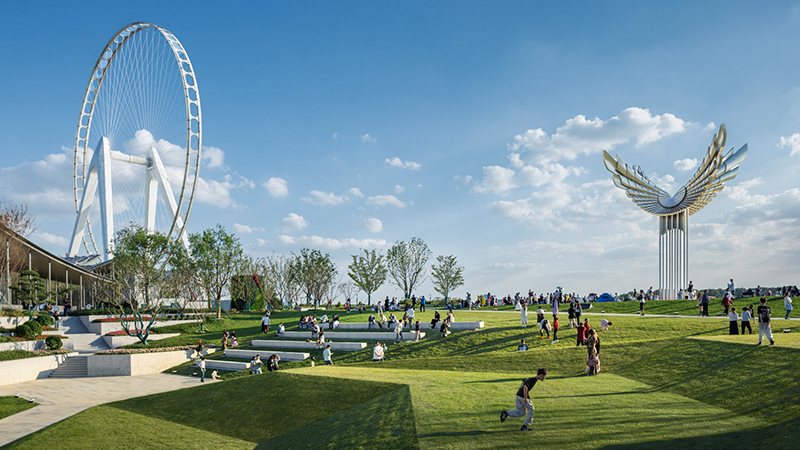穿过石南的一条自行车道
A cycling path through the heathland
比利时林堡省的国家公园是一个独特的自然保护区,有超过12000公顷的森林和石南荒地受到管理和保护。广阔的松林与紫色开花的石楠地交替出现,大池塘证明了砾石和沙子的开采,高高的山峰提供了绝佳的视野。此外,许多稀有和特殊的动物生活在这个自然环境中。该地区横跨不同的城市。骑自行车穿过石楠丛林是由林堡旅游局发起的,作为“骑行协同”战略的一部分。该项目是与林堡省、Visit Flanders、佛兰德自然与森林机构、区域景观Kempen and Maasland (RLKM)和法国国家旅游局合作开发的马斯梅赫伦市。
The National Park in the Belgian province of Limburg is a unique nature reserve where more than 12.000 ha of forest and heathland are managed and protected. Extensive pine forests alternate with purple flowering heathland, large ponds testify to gravel and sand extraction and high peaks offer great views. Moreover, numerous rare and special animals live in this natural setting. The area stretches across different municipalities. Cycling trough the heathland was initiated by Visit Limburg as part the ‘Cycling Synergy’strategy. The project was developed in collaboration with the province of Limburg, Visit Flanders, the Flemish Agency for Nature and Forests, Regional Landscape Kempen and Maasland (RLKM) and the municipality of Maasmechelen.
▽鸟瞰图
→ 穿过国家公园的自行车道
→ a cycling path through the national park
四个部分 Four parts
在这个项目中,碎片整理结合了一种新的独特方式来体验国家公园的动植物。“骑行穿越希斯兰”项目由四个部分组成。
•首先,道路封闭,禁止道路通行,并改为自行车道。
•第二,国道上的原始桥梁被改造为生态交通通道。
•第三个项目是修建桥梁并完成缺失的连接,以插入现有自行车网络中的新体验–节点551-550之间的连接。桥被认为是景观中的一个灯塔,与环境的自然价值也反应了该区域的采矿历史。
•最后,Weg naar Zutendaal路面的减少确保了3.700 m²的区域再次成为生态景观的一部分
The project Cycling trough the Heathland is a project in which the defragmentation is coupled with a new unique way to experience the National Park with respect to its fauna and flora. The project Cycling through the Heathland consists of four parts.
• First the road was closed for road traffic and transformed to a bicycle path.
• Second the original bridge over the national road that was transformed to a via eco-veloduct.
• The third project was the building of the bridge and completion of the missing link to insert the new experience in the existing bicycle network – the connection between node 551-550. The bridge was conceived as a beacon in het landscape with respect to natural values of its context and a small reference to the mining past of the area.
• Finally, the reduction of the road surface of the Weg naar Zutendaal ensures that a zone of 3.700 m²is once again part of the ecological landscap
 |  |
→ 这座桥是该项目的四个部分之一
→ The bridge is one of the four parts of the project Cycling through the Heathland.
自行车体验
Bicycle experience
自行车桥是“骑行穿过希斯兰”的一部分,这是一条穿过霍格肯本国家公园的骑行体验路线。除了与道路的安全交叉外,桥梁的概念、集成和建筑注重用户的体验,将桥梁作为景观中的一个对象以及该地区的生态性。桥梁设计提供了独特的石楠景观,并与高墙一起,在通往石楠的道路上营造了紧张气氛。由于这种不断变化的体验,桥梁作为一个整体成为了一个体验对象。桥梁也被视为茂密森林和开阔石楠之间边界的旅游娱乐对象。作为一个强大的整体,它是霍格·肯彭国家公园、林堡自行车旅游和过去采矿(通过使用当地针叶木)的标志和地标。
The bicycle bridge is part of 'Cycling through the Heathland’, a cycling experience route right through the Hoge Kempen National Park. In addition to a safe intersection with the road, the concept, integration and architecture of the bridge focuses on the experience of its users, on the bridge as an object in the landscape and on the ecological sensitivities of the area.The bridge design offers a unique view of the heathland and, with the high walls, builds a tension in the runup to it. Due to this changing experience, the bridge as a whole becomes an experience object.The bridge is also conceived as a tourist-recreational object on the border between the dense forest and the open heath. As a strong whole, it is an icon and landmark for the Hoge Kempen National Park, cycling tourism in Limburg and the mining past (through the use of local coniferous wood).
▽骑行体验
→ 桥梁设计提供了独特的石楠景观,并与高墙一起,在这之前营造了紧张气氛。
→ The bridge design offers a unique view of the heathland and, with the high walls, builds a tension in the run-up to it.
→ 桥的侧视图显示了两端的高墙和桥中心的视点
→ sideview of the bridge showing high walls at both ends and the viewpoint at the center of the bridge
社会和文化挑战
Social and cultural challenges
作为一种公共基础设施,自行车桥探索了桥梁建设可以实现的分层,并打破建筑、景观建设、景观设计和土木工程之间的界限。这座桥的整合和建筑仔细处理了许多社会和文化问题挑战。体验对象在设计骑行体验时,重点是场景的整体感。我们关注的是慢速用户在所有级别(包括细节)的体验。该设计说明了设计理念是面向自行车的设计。通过将这些体验元素添加到场景中,用户可以以不同的方式体验自然。所有元素一起构成了现有自行车的新层,这是“循环协同”战略的一部分。设计参考了旅游基础设施(桥墩、尖桩围栏等)和桥梁建筑(栈桥)。材料的选择与历史有关,大量种植针叶木以满足开采木材的需求。Weg naar Zutendaal道路表面的减少确保了3.700平方米的区域再次成为生态景观的一部分。
As a public infrastructure, the bicycle bridge explores the stratification that a bridge construction can absorb and breaks the boundaries between architecture, landscape construction, scenography and civil engineering. The bridge's integration and architecture deal carefully with a number of social and cultural challenges.0bject of experienceWhen designing the cycling experience, the focus was on a scenographic whole. Attention was paid on the experience of the slow user at all scale levels (including detailing). The design illustrates the philosophy of Bicycle Oriented Design. By adding these elements of experience to the landscape, the slow user can experience nature in a different way. All the elements together form a new layer to the existing bicycle network, which is part of the ‘cycling synergy’ strategy. Iconic object The design refers to historical typologies of tourist infrastructure (pier, picket fences,...) and bridge constructions (trestle bridge). The choice of materials is linked to the cultural-historical landscape in which coniferous wood was planted en masse to meet the demand for mining wood. Climate-robust object The reduction of the road surface of the Weg naar Zutendaal ensures that a zone of 3.700 m² is once again part of the ecological landscap
▽骑行栈桥
→ 材料的选择与针叶木的文化历史景观有关大量种植以满足开采木材的需求。
→ The choice of materials is linked to the cultural-historical landscape in which coniferous wood was planted en masse to meet the demand for mining wood.
建设
Construction
承载自行车平台的支撑点由两个垂直木桁架组成,位于混凝土基础底板上。桁架被视为标准化元件,这有利于工程的进展并减少了建设问题。自行车脚手架的墙是用针叶木做的,该材料是煤矿的地下通道的采煤木材。因此,自行车桥与环境有联系它所代表的:在文化历史景观中大量针叶木是为了满足开采需要。该桥的施工方法注重节奏、小跨度和预制构件。施工期间整个引道匝道设计为桥梁,与整体环境协调。而且桥梁不阻碍动物的迁移。
自行车脚手架的桥面由混凝土地板网格制成,宽度为3.5米墙壁之间。对于混凝土的选择,我们专注于自行车的舒适性:材料提供在湿滑条件下必要的抓地力,并确保平坦的路面具有适当的滚动阻力防滑性。此外,它是一种耐用的材料,几乎不需要维护。甲板是由木结构支撑,但Weg naar Zutendaal上的跨度除外。这里为了稳定,钢梁被尽可能隐藏在视线之外。
The support points that carry the bicycle deck each consist of two vertical wooden trusses that rest on concrete foundation soles. The trusses are conceived as standardized elements that can be produced in series. This benefits the progress of the works and reduces the multitude of constructive knots. The walls of the bicycle scaffolding are made of coniferous wood. The material refers to the mining wood used in the underground passages of the coal mines. As such the bicycle bridge has a link with the environment in which it stands: a cultural-historical landscape in which coniferous wood was planted en masse to meet the demand for mining wood.The construction method of the bridge focuses on rhythm, small spans and prefab elements. This enhances the image but also the coordination with the surrounding landscape. Thanks to the cost-effectiveness of the construction, the entire approach ramps are designed as a bridge. The bridge is thus not a physical barrier and does not hinder the migration of animals.The deck of the bicycle scaffolding made of concrete floor grids with a width of 3.5 meters is placed between the walls. With the choice of concrete, we are focusing on cycling comfort: the material provides the necessary grip in slippery conditions and ensures a flat road surface with the right rolling resistance and skid resistance. In addition, it is a durable material that requires little to no maintenance. The deck is supported by the wooden structure, with the exception of the span over the Weg naar Zutendaal. Here, for the sake of stability, steel girders are used that are hidden from view as much as possible.
▽剖面图


项目名称:骑行穿过Hoge Kempen国家公园
参与设计的建筑事务所:Maat-ontwerpers与Bart Lens合作
项目地点:比利时Maasmechelen Weg naar Heiwick
专员:参观林堡
结构工程师:Witteveen+Bos
设计年份:2017
建造年份:2019-2020年
大桥开通日期:2021年7月
立方米木材:约230立方米的偶氮合金支撑结构,约60立方米的软木墙板
工程表面:桥面约1.000平方米
木结构建筑公司:Wijma Kampen (Besix分包商)
建筑成本:3.061.346欧元(不含税)
Name of the project: Cycling through the Heathland in the Hoge Kempen National Park
Architecture offices involved in the design: Maat-ontwerpers in collaboration with Bart Lens
Project location: Weg naar Heiwick, Maasmechelen, Belgium
Commissioner: Visit Limburg
Structural engineers: Witteveen+Bos
Design year: 2017
Year Built: 2019-2020
Opening date of the bridge: July 2021
Cubic meter of wood: circa 230 m³ azobe support construction, circa 60 m³ softwood wall panels
Surface of the project: bridge deck circa 1.000 m²
Wood construction company: Wijma Kampen (subcontractor of Besix)
Construction cost: 3.061.346 euro (taxes not included)
更新日期:2023-02-17 20:37:04
非常感谢 Maat ontwerpers 与 Bart Lens 带来的精彩项目, 查阅更多Appreciations towards Maat ontwerpers and Bart Lens for sharing wonderful work on hhlloo. Click to see more works!











